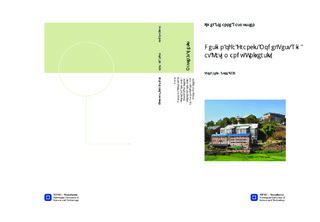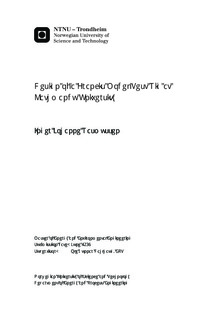| dc.description.abstract | Due to the growing energy demand in Nepal and its neighbouring countries, the focuson hydropower development in Nepal has increased. As a consequence, the TurbineTesting Laboratory (TTL) at Kathmandu University (KU) has been developed to handleperformance testing of model turbines. However, the laboratory is not yet equipped witha test rig which can handle model tests according to the specications of the international standard for model tests of hydraulic turbines, IEC 60193. This master's thesis is one of the first stages towards the aim of developing turbine model test rigs in compliance with IEC 60193 at TTL.The objective of this project is to design a Francis model test rig for TTL, using theFrancis test rig at the Waterpower Laboratory at NTNU as the initial design. The rigmust full the accuracy requirements of IEC 60193 and it should be capable of acomplete performance test for dierent sized turbines.The pressure tank and the draft tube tank are designed to have the same shape as thetanks at the Waterpower Laboratory, but with some difference in volume. The mainshaft and bearing block will include systems to measure the speed of rotation, axialthrust, generator torque, and friction torque without the need of a hydraulic system.The guide vane angles are manually controlled and measured by a rotary encoder.The pressure dierence between inlet and outlet is measured by dierential pressuretransducers, calibrated by a deadweight manometer. The flow rate is measured by an electromagnetic flowmeter which is calibrated using the volumetric method. At theoutlet to the pumps, the temperature, oxygen level and pressure of the water is measured.3D CAD drawings of the nal design are presented in this thesis. The most practicaland space efficient placement of the test rig in the laboratory has been chosen basedon discussions with the sta at NTNU and KU. The rig has been integrated in themain pipe system, and designed for both open and closed loop modes. Procedures foreciency measurements have also been developed.The work done in this thesis is an input to the EnergizeNepal project on developing aFrancis model test rig at TTL. | nb_NO |

